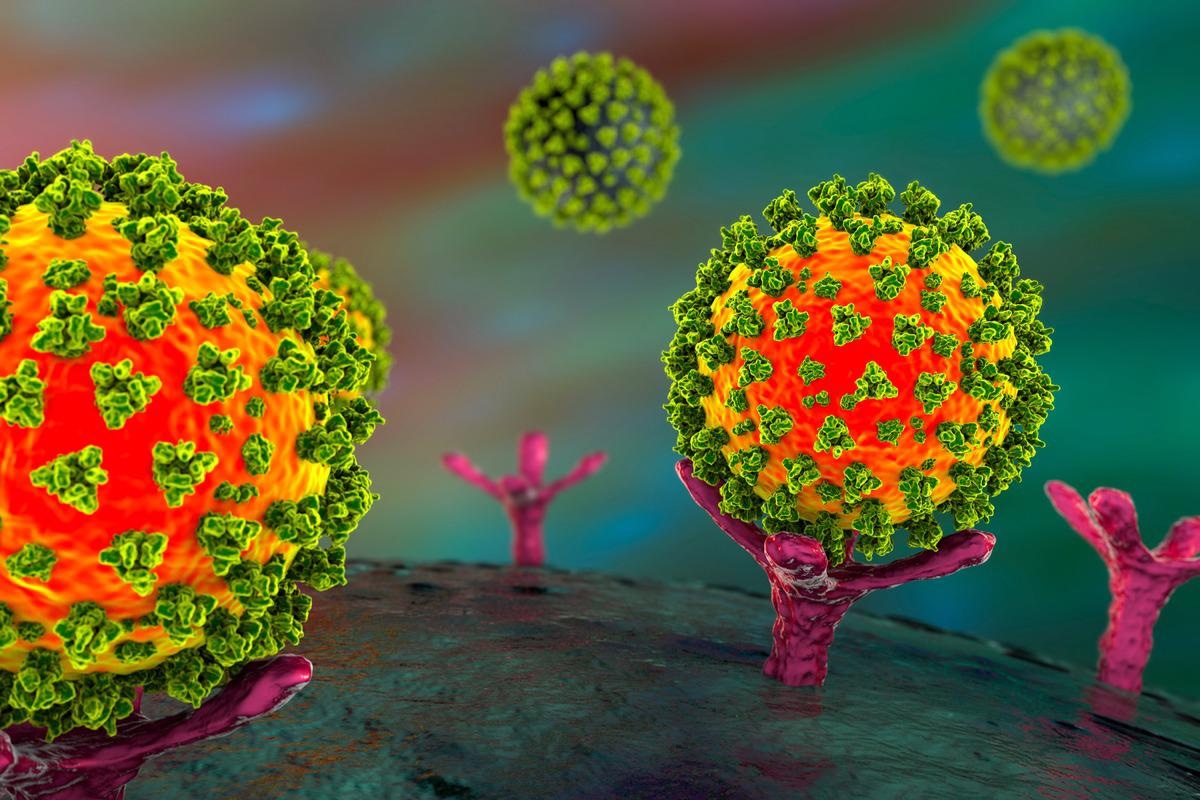In a recent study posted to the bioRxiv* pre-print server, researchers investigated allosteric binders of angiotensin-converting enzyme 2 (ACE2) that significantly inhibit severe acute respiratory syndrome coronavirus 2 (SARS-CoV-2) replication without interrupting ACE2 enzymatic function.

Vaccines have been effective in decreasing the coronavirus disease 2019 (COVID-19) burden by increasing the serological immunity of the host. However, there is a need for other strategies that target molecular mechanisms of SARS-CoV-2 pathogenicity and inhibit intracellular viral entry and replication.
One such class of COVID-19 therapeutics is small molecule allosteric binders that target the viral spike (S) binding with host proteins such as ACE2 to inhibit viral replication and transmission without damaging natural ACE2 function for the management of acute SARS-CoV-2 infections.
About the study
In the present study, researchers reported a hybrid approach comprising computational models and high throughput screening to discover allosteric ACE2 binders inhibiting viral replication without interrupting ACE2 renal, pulmonary, immune, and cardiovascular functions.
The team used Microscale thermophoresis (MST) for measuring the ACE2 binding of small molecular compounds. For MST, recombinant ACE2 protein with a polyhistidine-tagged (His-tag) peptide-specific fluoroprobe was used.
The enzymatic assays with five-point dilutions and 11-point dilution series were performed for determining whether cleavage of the His-tag peptide substitute of ACE2 was interrupted by these small molecule allosteric ACE2 binders. The compounds were then inserted into models developed by the University of North California (UNC) and National Center for Advancing Translational Sciences (NCATS) teams.
The compounds nominated by these models were then used for experimental validation. Allosteric binders identified in the validation experiments were subjected to the live SARS-CoV-2 Fluc assay that assessed the inhibition of SARS-CoV-2 replication with counter screens for luciferase assay interference and cytotoxicity assessments. The counter screens were used to eliminate assay artifacts. MLN-4760, a known ACE2 inhibitor with ACE2 inhibition IC50 value 1.5 µm and binding affinity 702 nM, was selected as a positive control in this study.
Results
With the help of the MST and enzymatic assays, 3,426 compounds were identified and subjected to quantitative structure-activity relationship (QSAR) modeling. On applying the QSAR model, 512 virtual hits were nominated, of which 68 (13%) compounds demonstrated allosteric binding to ACE2 in the experimental validation. These compounds were then subjected to the live SARS-CoV-2 Fluc assay, as a result of which only five compounds were identified as potent allosteric ACE2 binders that did not interrupt ACE2 function. These compounds had efficacy greater than 70% and half-maximal inhibitory concentration (IC50) values of 14 to 25 µM. Of these compounds, only compound 1 showed a cytotoxic effect with IC50 = 24.8 and compounds 3 and 5 had moderate luciferase inhibiting activity. The remaining compounds were inactive in the counter screens and can be considered as true SARS-CoV-2 inhibitors.
The strategy for nominating new compounds proceeded by first predicting every compound in the screening set with the Multi-Descriptor Read Across (MuDRA) model and the gradient boosting model which predicted 20 and 1,015 actives, respectively. Further, the simplex-based (SB) model was used for identifying the highest priority nominations, post which six compounds of the MuDRA model and all 20 compounds of the gradient boosting model were chosen for the next round of nominations.
Additionally, ligand-based pharmacophore (LBP) modeling identified 110 active compounds. Post virtual screening, 58 and 140 compounds from the SB and LBP models, respectively, were chosen for the experimental validation based on their pharmacophore fit scores and the Morgan fingerprints based-Tanimoto sorting. The compounds with high prediction scores, indicative of their high activity, nominated by a minimum of two of the four models were assessed for the inhibition of viral replication activity.
Overall, five compounds with dissociation coefficients (Kd) lower than 10 µm with significant ACE2 binding and viral replication inhibition properties were identified that did not damage host ACE2 function. All four models had area under the receiver operating characteristic curve (AUC) values equal to or greater than 65% in both the test and training datasets.
To summarize, small molecule allosteric ACE2 binders discovered by a hybrid approach of computational models and high throughput screening effectively bind to ACE2, inhibit SARS-CoV-2 entry into host cells, and the viral replication without damaging ACE2 natural functions. Therefore, they can be used as potential therapeutic agents against acute SARS-CoV-2 infections. However further research is required to completely determine the allosteric binding mechanism of these small molecular compounds.
*Important notice
bioRxiv publishes preliminary scientific reports that are not peer-reviewed and, therefore, should not be regarded as conclusive, guide clinical practice/health-related behavior, or treated as established information.
- Joshua E. Hochuli, et al. (2022). Allosteric binders of ACE2 are promising anti-SARS-CoV-2 agents. bioRxiv. doi: https://doi.org/10.1101/2022.03.15.484484 https://www.biorxiv.org/content/10.1101/2022.03.15.484484v1
Posted in: Medical Science News | Medical Research News | Disease/Infection News
Tags: ACE2, Angiotensin, Angiotensin-Converting Enzyme 2, Assay, binding affinity, Compound, Coronavirus, covid-19, Cytotoxicity, Efficacy, Enzyme, High Throughput, immunity, Intracellular, Ligand, Luciferase, Molecule, Protein, Research, Respiratory, SARS, SARS-CoV-2, Severe Acute Respiratory, Severe Acute Respiratory Syndrome, Syndrome, Therapeutics

Written by
Pooja Toshniwal Paharia
Dr. based clinical-radiological diagnosis and management of oral lesions and conditions and associated maxillofacial disorders.
Source: Read Full Article